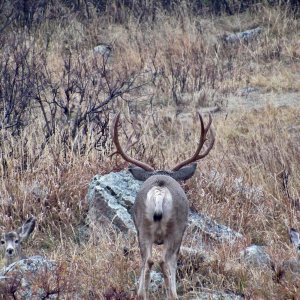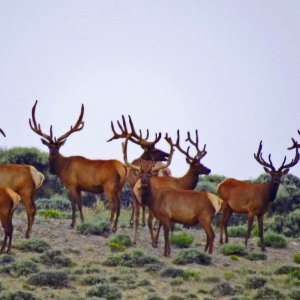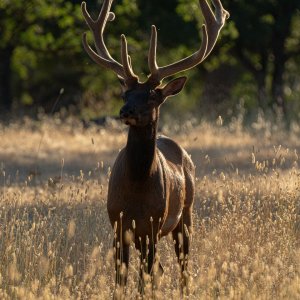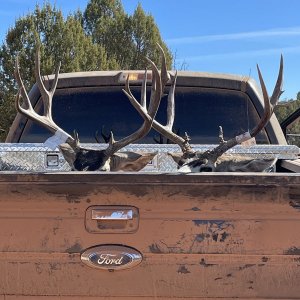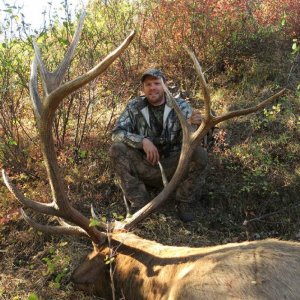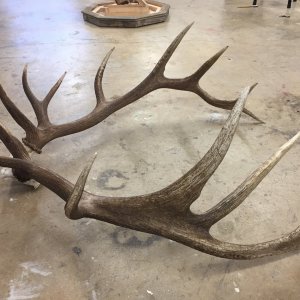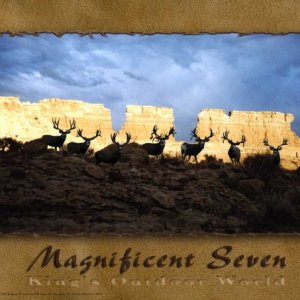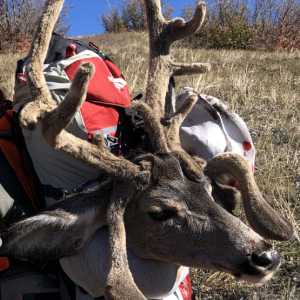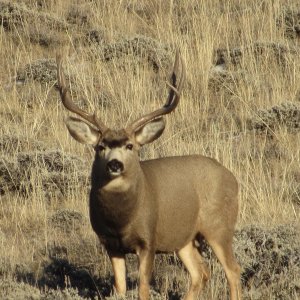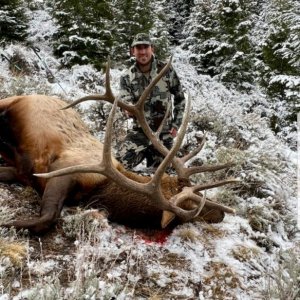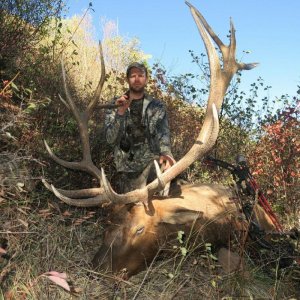quest
Very Active Member
- Messages
- 2,192
Upcoming Winter Could Cause Severe Deer Mortality
12/17/2012
CHEYENNE - The historic drought that affected Wyoming during 2012 has likely been dramatic for wildlife especially as they enter the upcoming winter.
Decreased snowpack and rain last winter, spring, and summer has resulted in a measurable lack of forage leaving wildlife in poor body condition. This will significantly impact the mule deer population even if Wyoming experiences a normal winter.
A heavy snowpack, especially in the lowland deer wintering areas, would make significant mortality very likely. The amount and location of where the heaviest snows occur in wintering areas is key to mule deer survival. Mule deer, especially does that raised a fawn during the past year, are in poorer body condition than normal. As mule deer leave summer range their body condition greatly influences their chances of surviving the upcoming winter. Because of drought conditions this past summer, mule deer throughout much of the state are in poor condition.
Biologists are expecting higher-than-normal mule deer mortality even if Wyoming experiences a mild winter. If heavy snows occur on important wintering areas, deer may move to less favorable habitat in an attempt to survive. Wintering in less-favorable habitats could in turn contribute to increased winter mortality.
?Mule deer and pronghorn are already in poor condition going into this fall and there is simply not much for them to eat on their transition and winter ranges. We anticipate increased mortality in many parts of Wyoming even if we have a mild or normal winter,? said Daryl Lutz, the Wyoming Game and Fish Department's wildlife management coordinator in Lander.
Snow depth isn't the only concern mule deer face. If the snow crusts, mule deer expend more energy to paw through the snow for available forage. Crusted snow can also cause deer to move to less desirable ranges in the search of more easily accessible food sources. Food availability is compounded this year by the poor vegetation quality caused by prolonged drought. Ideally, a healthy winter range should have a variety of the plants favored by mule deer. Having healthy stands of big sagebrush, bitterbrush and serviceberry are key to the long-term viability of a mule deer population. Another drought-stricken winter and the lack of moisture would further stress those critical shrub species important to long-term vitality of mule deer populations.
The upcoming winter could present a double-edged sword to mule deer populations. If a heavy snowpack comes,especially in lowland deer wintering areas, significant mortality could occur. If the snowfall is light, the moisture-starved plants will be stressed further and the quality of the habitat will continue to deteriorate.
For the long-term health of mule deer herds, substantial snowfall during the winter months is beneficial. Although heavy snows -- especially when coupled with excessively cold temperatures -- may result in winter loss of big game animals, snow also provides essential moisture. If good moisture conditions persist, especially in the spring, over a number of years, plants respond and habitat improves in both the quality and quantity of forage available.
At check stations this fall, hunters in many areas reported seeing numbers of young bucks and does with fawns, which bodes well for the future; however, many are in poor body condition and fawns are typically smaller than they should be. This, in concert with poor forage condition on many wintering areas is a major concern. During checks this past hunting season, biologists were busy assessing not only harvest, but body condition, specifically fat reserves of harvested animals.
?Deer taken at higher elevations had decent fat reserves,? said Laramie region biologist Lee Knox, ?but deer harvested at lower elevations were in noticeably poorer condition.?
In many areas of the state the winter has been mild, but during any winter, even with good forage and normal conditions, there will be some loss of deer. Game and Fish personnel will further evaluate this winter?s losses in the spring.
(Contact: Al Langston (307) 777-4540)
-WGFD-
That's all we need! quest
12/17/2012
CHEYENNE - The historic drought that affected Wyoming during 2012 has likely been dramatic for wildlife especially as they enter the upcoming winter.
Decreased snowpack and rain last winter, spring, and summer has resulted in a measurable lack of forage leaving wildlife in poor body condition. This will significantly impact the mule deer population even if Wyoming experiences a normal winter.
A heavy snowpack, especially in the lowland deer wintering areas, would make significant mortality very likely. The amount and location of where the heaviest snows occur in wintering areas is key to mule deer survival. Mule deer, especially does that raised a fawn during the past year, are in poorer body condition than normal. As mule deer leave summer range their body condition greatly influences their chances of surviving the upcoming winter. Because of drought conditions this past summer, mule deer throughout much of the state are in poor condition.
Biologists are expecting higher-than-normal mule deer mortality even if Wyoming experiences a mild winter. If heavy snows occur on important wintering areas, deer may move to less favorable habitat in an attempt to survive. Wintering in less-favorable habitats could in turn contribute to increased winter mortality.
?Mule deer and pronghorn are already in poor condition going into this fall and there is simply not much for them to eat on their transition and winter ranges. We anticipate increased mortality in many parts of Wyoming even if we have a mild or normal winter,? said Daryl Lutz, the Wyoming Game and Fish Department's wildlife management coordinator in Lander.
Snow depth isn't the only concern mule deer face. If the snow crusts, mule deer expend more energy to paw through the snow for available forage. Crusted snow can also cause deer to move to less desirable ranges in the search of more easily accessible food sources. Food availability is compounded this year by the poor vegetation quality caused by prolonged drought. Ideally, a healthy winter range should have a variety of the plants favored by mule deer. Having healthy stands of big sagebrush, bitterbrush and serviceberry are key to the long-term viability of a mule deer population. Another drought-stricken winter and the lack of moisture would further stress those critical shrub species important to long-term vitality of mule deer populations.
The upcoming winter could present a double-edged sword to mule deer populations. If a heavy snowpack comes,especially in lowland deer wintering areas, significant mortality could occur. If the snowfall is light, the moisture-starved plants will be stressed further and the quality of the habitat will continue to deteriorate.
For the long-term health of mule deer herds, substantial snowfall during the winter months is beneficial. Although heavy snows -- especially when coupled with excessively cold temperatures -- may result in winter loss of big game animals, snow also provides essential moisture. If good moisture conditions persist, especially in the spring, over a number of years, plants respond and habitat improves in both the quality and quantity of forage available.
At check stations this fall, hunters in many areas reported seeing numbers of young bucks and does with fawns, which bodes well for the future; however, many are in poor body condition and fawns are typically smaller than they should be. This, in concert with poor forage condition on many wintering areas is a major concern. During checks this past hunting season, biologists were busy assessing not only harvest, but body condition, specifically fat reserves of harvested animals.
?Deer taken at higher elevations had decent fat reserves,? said Laramie region biologist Lee Knox, ?but deer harvested at lower elevations were in noticeably poorer condition.?
In many areas of the state the winter has been mild, but during any winter, even with good forage and normal conditions, there will be some loss of deer. Game and Fish personnel will further evaluate this winter?s losses in the spring.
(Contact: Al Langston (307) 777-4540)
-WGFD-
That's all we need! quest


